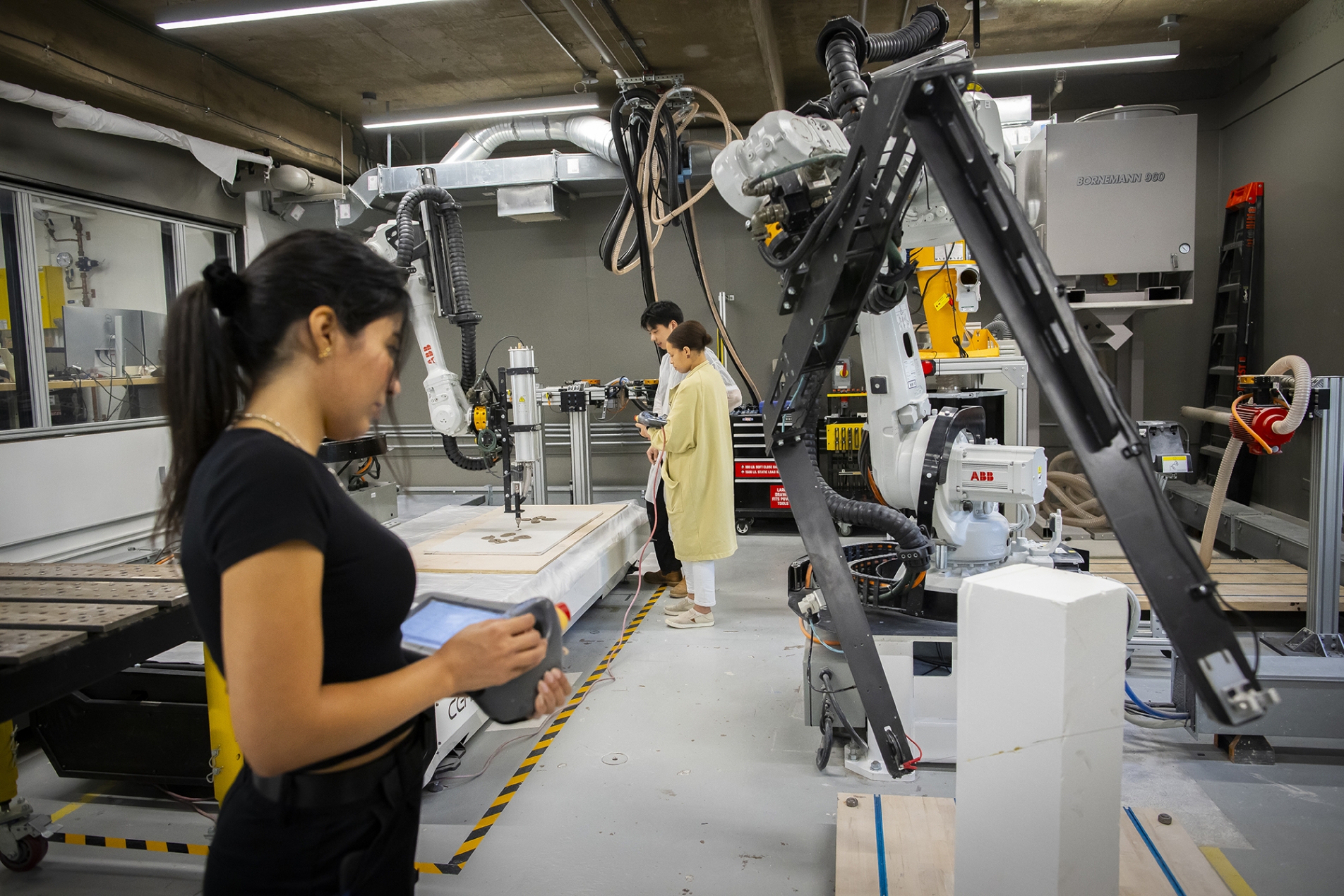In the adrenaline-fueled rush of a set-up for their studio review, a team of students pursuing a Master of Science in Design with a concentration in Robotics and Autonomous Systems (MSD-RAS) assemble layer upon layer of ceramic bricks, securing them in place with a satisfying “clink.” And as the model got taller, the stakes got higher. The breakability of ceramic was not far from anybody’s mind.
Clay is one of the world’s oldest building materials: From adobe bricks to terracotta tiles, clay has been used to construct buildings for millennia. Now, advances in computational design and robotic technology have revolutionized the way these bricks are made, and what forms they can take. Made by extruding layers of clay in carefully defined toolpaths, the students 3D printed their designs using six-axis industrial robots, more easily found in a car manufacturing plant than a design school.
These fully-integrated and automated robots are housed just a floor below the Plaza Gallery in Meyerson Hall, in the Stuart Weitzman School of Design’s Robotics Lab, which opened in 2019 as part of the Department of Architecture’s Advanced Research and Innovation Lab. They position the School at the forefront of architectural design research that leverages and develops approaches to robotic fabrication. The two-semester MSD-RAS program combines an education in robotics with the tools of artificial intelligence and automated systems, which hold the promise of thoroughly adaptive, sustainable, and intelligent approaches to manufacturing and design.
Robert Stuart-Smith, the program’s director and an assistant professor of architecture, sees the MSD-RAS program in relation to the Fourth Industrial Revolution, a historic shift in manufacturing that began in the last decade or so with the development of technology like artificial intelligence. One simple example of a semi-autonomous robot application, is a sanding robot, which adjusts its position in response to sensor-feedback to maintain a constant amount of pressure that it applies to the part it is finishing.
“Most architecture is still built by Second Industrial Revolution technologies of mass production,” says Stuart-Smith, “where things are only economical if we make them all the same, and produce these same parts at high volumes of production. But with the Fourth Industrial Revolution, we have the capabilities of bespoke production at a scale or volume similar to mass production.” The goal, he says, is to put artisanship back into manufacturing, in a way that’s less expensive and more accessible than ever before, and less wasteful.
Read more at Weitzman News.








